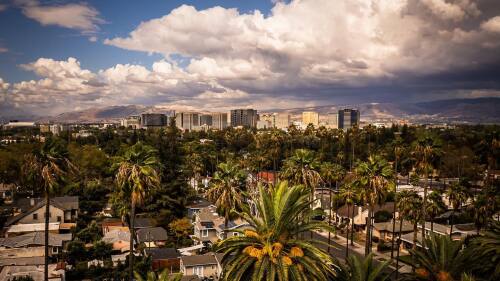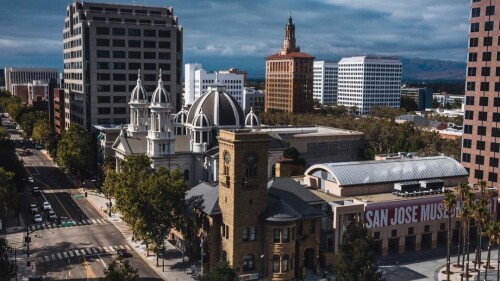The city of San Jose was founded on Nov. 29, 1777, as el Pueblo de San José de Guadalupe, and became the first town in the Spanish colony, Nueva California. Now that 245+ years have passed, the city and its streets are chock-full of vibrant history.
It’s safe to say that over the years, the city has been touched by countless historical figures and happenings — many of which have shaped the names of San Jose’s buildings, parks, and streets. In this guide, we’re delving into the history of San Jose’s streets — specifically how they were named.

Willow Glen has deep roots to the development of San Jose.
Photo via @bennys_journey
Willow Glen
What was once incorporated as its own town in 1927 is now a prominent area that became a part of our city in 1936. It offers a small-town feel with streets lined with small cafes, vintage boutiques, clean parks, and more.
Meridian Avenue — a meridian is defined as an imaginary line of longitude which extends from the North to South Pole. In this case, this street aligns with the Mount Diablo Meridian.
Curtner Avenue — named after early San Jose pioneers, Henry and Lucy Curtner. In 1852, Henry arrived from Indiana with $20 to his name, but quickly rose to millionaire status and was one of Santa Clara Valley’s most notable philanthropists.
Dry Creek Road — following a devastating 1866 flood, the Los Gatos Creek filled + flowed along the Los Gatos North Water Ditch and into an old channel east of Meridian Avenue. It later became a dry creek river bed, which eventually converted into a road.
Leigh Avenue — named after H.A. Leigh, and his widowed mother Delicia. She helped the family rise to social prominence within the local politics scene.
Bascom Avenue — named to honor Dr. H.L. Bascom and his family. His grandmother opened a boarding house which hosted elite members of society, as well as legislators when SJ was the state capital.
Sunol-Midtown
Nestled along the Alameda is this urban village that is mainly residential, but offers an eclectic mix of restaurants, coffee shops, thrift stores — and even an axe-throwing spot.
Sunol Street — named after Spanish settler Antonio Marie Suñol, who opened one of San Jose’s first mercantile shops and worked with Henry Morris Naglee to convert Mexican land grants.
San Carlos Street — many of San Jose’s downtown streets were named after the California Missions, and this one was named after Mission San Carlos Borromeo de Carmelo.
Race Street — between 1859 and 1901, there was a 76-acre site along this street that was known as Agricultural Park. It included a horseracing and bicycle track, but was later redeveloped into the Shasta Hanchett Park neighborhood.
Park Avenue — although its original name was Union Avenue during the Civil War, it was later renamed after the Hanchett Residence Park was developed in 1907.
Morrison Avenue — named after early San Jose settler James Morrison, who held a prominent position in Santa Clara Valley’s social sphere where he hosted many city officials at his grand home on the corner of Fifth and Julian streets.
East San Jose
Many San Joseans consider this region of our city a community in itself, and there’s no doubt about it. Find cultural celebrations at Emma Prusch Park, discover San Jose’s past at History Park, or enjoy lowrider meet-ups near Story + King roads.
King Road — named after Andrew Lewis King, a settler who came to Santa Clara Valley in 1851 and owned a 95-acre orchard home where the road now runs through.
Tully Road — named after Irish immigrant John Tully, who owned thousands of acres in Evergreen Valley.
Quimby Road — this prominent Evergreen road was named after San Jose’s former Mayor John Alonzo Quimby, who served from 1863-1868.
McKee Road — named after farmer Joseph Olcott McKee who owned land in the area. He was a figure in helping move the state capital from San Jose to Vallejo.
Aborn Road — named after John Aborn, a San Jose pioneer who emigrated from England in the 1830s. A ranch John once owned would become William Prusch’s, whose daughter was Emma, the namesake of Emma Prusch Farm Park.













